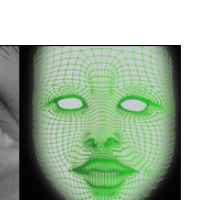FBI’s Facial Recognition System Targeted an Innocent Person up to 1 out of 5 Times
 (graphic: AP)
(graphic: AP)
The Federal Bureau of Investigation’s (FBI) new facial recognition system is far from flawless. The technology can accidentally target an innocent person up to 20% of the time, according to a 2010 report (pdf) just released.
The FBI document, obtained by the Electronic Privacy Information Center, revealed the effectiveness (and ineffectiveness) of the agency’s “Next Generation Identification” (NGI) system.
“NGI shall return the incorrect candidate a maximum of 20% of the time, as a result of facial recognition search in support of photo investigation services,” the FBI report said.
NGI was a little more accurate when the search involved a “repository” of data, bumping the success rate up from 80% to 85%.
The system’s iris-scan technology was found to be 98% accurate as long as the repository was in play, otherwise the rate dropped to 90%.
Tim Cushing of techdirt noted that the documents were produced three years ago, “so there's every reason to believe the accuracy of the software has improved.”
Still, it was “worrying” that the FBI was willing to roll out the technology—which had a $1 billion price tag—knowing it could be wrong one out of every five times, Cushing added.
-Noel Brinkerhoff
To Learn More:
Facial Recognition Software That Returns Incorrect Results 20% Of The Time Is Good Enough For The FBI (by Tim Cushing, techdirt)
FBI's Facial Recognition Software Could Fail 20 Percent of the Time (by Dustin Volz, National Journal)
Next Generation Identification (NGI) System Requirements Document, Version 4.4 (Federal Bureau of Investigation) (pdf)
FBI Agrees to Share Facial Recognition Searches with All Police Departments (by Noel Brinkerhoff, AllGov)
FBI Prepares Billion-Dollar Iris Recognition Database (by Matt Bewig, AllGov)
- Top Stories
- Unusual News
- Where is the Money Going?
- Controversies
- U.S. and the World
- Appointments and Resignations
- Latest News
- Trump to Stop Deportations If…
- Trump Denounces World Series
- What If China Invaded the United States?
- Donald Trump Has a Mental Health Problem and It Has a Name
- Trump Goes on Renaming Frenzy






Comments